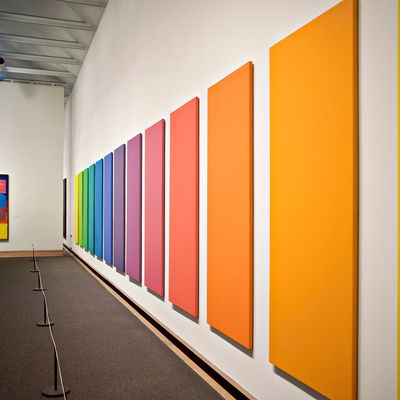
The WhitneyÔÇÖs moving, MoMA is swelling, and now the Met has entered the museum-expansion sweepstakes too. The mother of all museums announced ÔÇö or rather mumbled in agreement after New YorkÔÇÖs Carl Swanson broke the news in March and Robin Pogrebin pressed the question in the Times┬áÔÇö that it hopes to gut-renovate, or possibly even tear down and replace, the Lila Acheson Wallace Wing, where its historically spotty collection of modern and contemporary art is now on awkward display. The Met is pursuing two admirable, but possibly incompatible, goals: to provide an adequate and permanent home for Leonard LauderÔÇÖs $1 billion gift of 79 Cubist artworks, and to make room to catch up with the 21st century. But the director Thomas Campbell also hinted at a third, much more troubling aim: to open the museum toward Central Park and create a new entrance. That would draw more crowds into the park, disturbing the verdant peace, and also eat up a big chunk of the potential gallery space with a new lobby, coat check, security, ticketing, and information desk. The current building, Campbell told the Times, ÔÇ£turns the museumÔÇÖs back on the park.ÔÇØ ThereÔÇÖs a very good reason for that: The Met is in Central Park but not part of it.
Turning the plan into reality will be brutal: Raising the several hundred million dollars will be the easy part, compared with the battles to be waged with the Landmarks Preservation Commission, the Parks Department, neighbors, preservationists, and all those around the world who feel they have a stake in the Met, the park, or New York. The issues will soon get murky: Is this another case of museum hubris? Is the Met wading into a contemporary-art world where itÔÇÖs not comfortable and doesnÔÇÖt belong? Does this represent a fresh incursion into public green space? Will an architectural gesture overshadow whatÔÇÖs good for the art? Is whatÔÇÖs good for the Met the same as whatÔÇÖs good for the city?
For now ÔÇö and for the next eight years ÔÇö the Met intends to lodge its growing modern and contemporary collection in the Marcel Breuer building that the Whitney will soon vacate. But eventually the museum wonÔÇÖt need BreuerÔÇÖs great concrete upside-down ziggurat, and that building could fall in the gap between two institutions. The MetÔÇÖs plan seems promising, but full of worrisomely plausible scenarios: a thronged corner of Central Park, a costly new wing thatÔÇÖs obsolete on the day it opens, and the old Whitney sitting empty, useless, and unloved.


